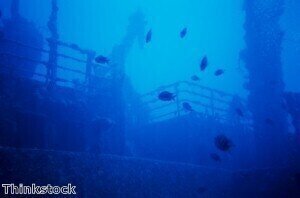Bioanalytical
Conservation secrets revealed in ancient warship
Jun 25 2012
Examination of a 2,300-year-old warship has unveiled several secrets for preserving pieces of historic memorabilia, with researchers exploring the vessel remains uncovering several interesting sulfuric acid factors.
An ancient discovery off the Bay of Pirates in north-eastern Sicily has sparked several new findings on the conservation of historical artefacts. Patrick Frank, staff scientist at the Stanford Synchrotron Radiation Lightsource, and colleagues have been examining the ram, called a rostrum, of the ship which was found in 2008 under 22 feet of water.
The break-like weapon was used on the ancient warship to ram enemy ships in the First Punic War, the conflict between ancient Rome and Carthage. The report, in the journal Analytical Chemistry, also identifies a major threat that conservators must address in preserving this archaeological treasure for future generations.
Authors of the study, from SLAC National Accelerator Laboratory and the University of Palermo, conducted their research in order to learn more about the origin and condition of the rostrum wood. They found that the wood showed that the strutwork of the rostrum was pine, and waterproofed with pine tar.
Significantly, by analysing black and brown rostrum wood using sulfur K-edge X-ray absorption spectroscopy (XAS) and gas chromatography/ mass spectrometry (GC/MS), they discovered copious sulfur in the wood that could turn into sulfuric acid, an extremely corrosive substance.
It is already established that sulfuric acid can threaten the existence of archaeological treasures, and has a high presence in wooden marine vessels. However, the authors found through their tests that the iron and copper permeating the wood may catalyze that transformation.
They also suggested that removing ozone from museum air could slow the conversion, which could result in better conservation techniques. The research, originally based on discovering the origin and condition of the rostrum wood, actually opened up new areas of research on the conservation of marine history.
Posted by Neil Clark
Digital Edition
Chromatography Today - Buyers' Guide 2022
October 2023
In This Edition Modern & Practical Applications - Accelerating ADC Development with Mass Spectrometry - Implementing High-Resolution Ion Mobility into Peptide Mapping Workflows Chromatogr...
View all digital editions
Events
Jan 20 2025 Amsterdam, Netherlands
Feb 03 2025 Dubai, UAE
Feb 05 2025 Guangzhou, China
Mar 01 2025 Boston, MA, USA
Mar 04 2025 Berlin, Germany












